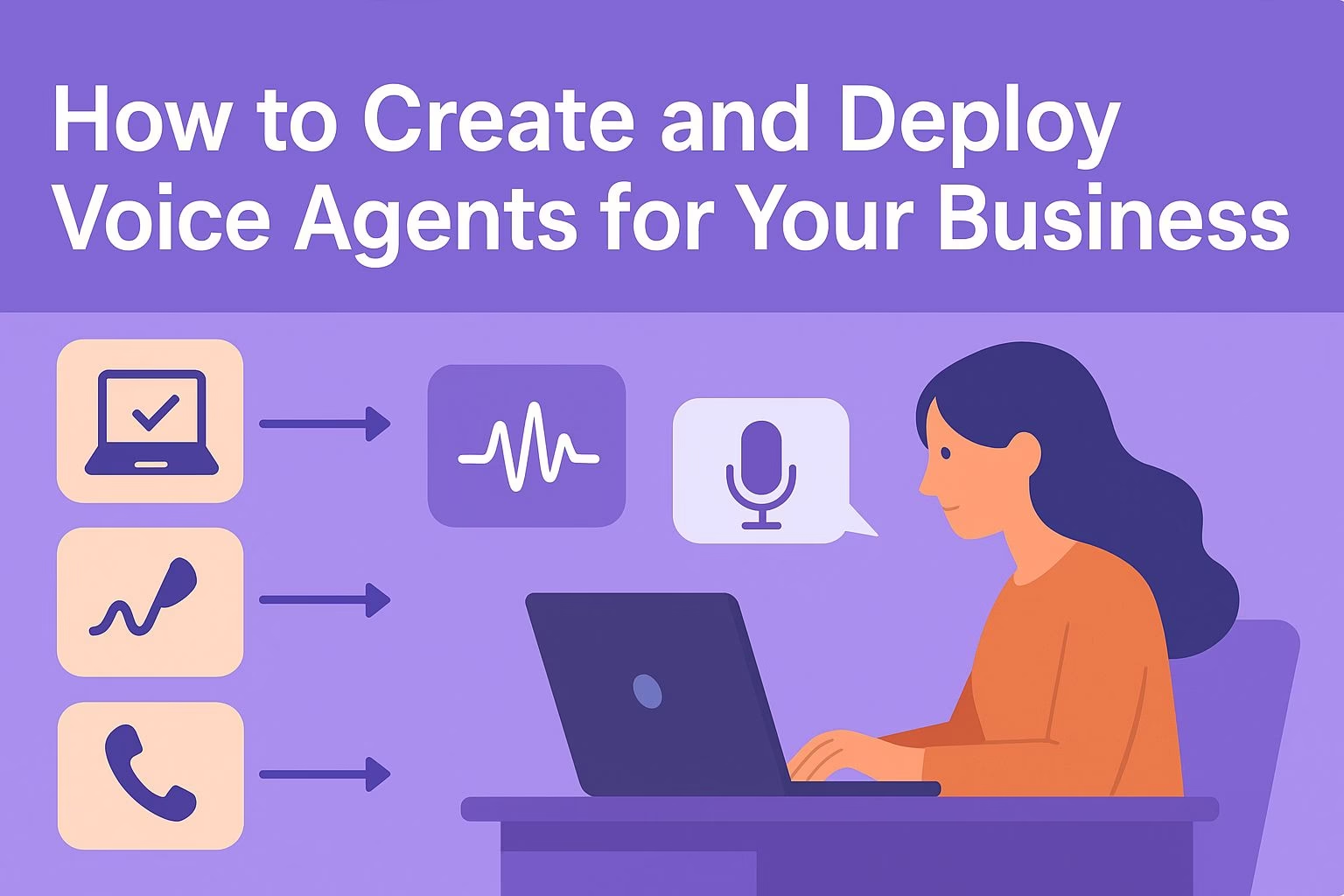How to Create and Deploy Voice Agents for Your Business
Summary
• Sign up and test voices in Sonic 3.0 for clarity and low latency
• Create your agent in Cartesia’s Voice Agents section and test at +1 (515) 800-8360
• Deploy to production, get a working number, and monitor performance metrics
• Refine prompts and scale across multiple business functions
• Compare Cartesia with ElevenLabs and Vapi for broader use cases
AI voice agents are changing how businesses handle calls, take orders, and manage customer service.
Using Cartesia, you can now build and deploy your own agent that sounds natural and handles real conversations automatically.
This guide walks you through each step, from testing your first voice to deploying a working phone number customers can call.
You’ll also see how to measure performance, control costs, and fine-tune your agent’s behavior.
For anyone managing small to mid-sized businesses, this approach saves time, reduces support load, and improves customer response speed.
You’ll learn how to use Sonic 3.0 for clarity, test calls live, and promote your AI agent to production with ease.
Step 1: Set Up Your Cartesia Account
Go to Cartesia and click Start for Free to begin.
Once you’re in, explore the dashboard and test voices using Sonic 3.0 for low latency and clear, human-like sound.
Take a few minutes to experiment with different voice tones and styles before moving to the agent setup.
Sonic 3.0 provides the most balanced mix of speed, quality, and responsiveness for phone interactions.
Quick setup checklist:
-
Sign up for a free Cartesia account
-
Open Text to Speech
-
Choose Sonic 3.0 for best results
-
Type short phrases and test latency
-
Save your preferred voice settings
This testing phase ensures that your AI agent will sound natural and handle speech without awkward pauses or robotic tone.
Step 2: Create Your First AI Voice Agent
Scroll to Voice Agents in your dashboard and click Text to Agent. In the description field, define what you want your AI to do.
For example:
“Pizza order assistant that greets customers, takes orders, confirms details, and calculates totals.”
Once you’ve described your agent’s role, select your preferred voice and click Generate. This creates a functioning prototype you can test using the dialer.
Dial +1 (515) 800-8360 and speak to your AI. Evaluate how quickly it responds, how accurately it handles requests, and how natural the voice sounds.
If the interaction feels smooth, your agent is ready for the next step: deployment.
Step 3: Test and Optimize Your Voice Agent
Before going live, test your AI voice agent across several scenarios. Call the test number +1 (515) 800-8360 and note how it responds to varied inputs, accents, and pacing.
Check that it can:
-
Recognize different customer intents
-
Confirm orders or details correctly
-
Maintain a friendly, natural tone throughout the call
Track the response speed and clarity. If the agent seems slow or confused, refine your prompt in the Text to Agent editor. Even small prompt adjustments can greatly improve the flow and accuracy of interactions.
You can also test across different use cases like appointment scheduling, delivery confirmations, or FAQs.
This helps ensure your agent performs well before you move to production.
Step 4: Deploy to Production and Monitor Performance
Once you’re satisfied with your test results, click Promote to Production in Cartesia. This step gives your AI agent a working phone number that real customers can call.
Add this number to your business website, social pages, or support channel.
Then monitor performance under the Metrics tab, where you’ll find detailed analytics such as:
-
Total calls handled
-
Average call duration
-
Credit usage and costs
Cartesia charges roughly one credit per character for text-to-speech and about $0.06 per minute for live calls.
Keeping an eye on these metrics helps you control spending while maintaining call quality.
Step 5: Refine Your Prompts and Expand Use Cases
After a few days of live testing, review the call recordings and transcripts to spot where the AI struggled or misinterpreted customer intent.
These insights will guide your next round of improvements.
You can refine prompts directly within the Voice Agent Editor. Update phrasing, clarify instructions, or adjust tone. Each tweak helps the agent respond more naturally and stay aligned with your brand’s voice.
Once your first agent performs consistently, consider expanding into new roles such as:
-
Customer support for FAQs or complaints
-
Sales assistants for qualifying leads or confirming orders
-
Appointment schedulers for clinics, salons, or services
-
Survey callers for post-sale feedback
Cartesia’s flexibility makes it possible to create multiple agents across departments without hiring extra staff.
For a business aiming to grow fast and automate support, this is a scalable and cost-friendly solution.
You can also explore ElevenLabs and Vapi, two other trusted tools for building AI voice agents with different features and integrations.

